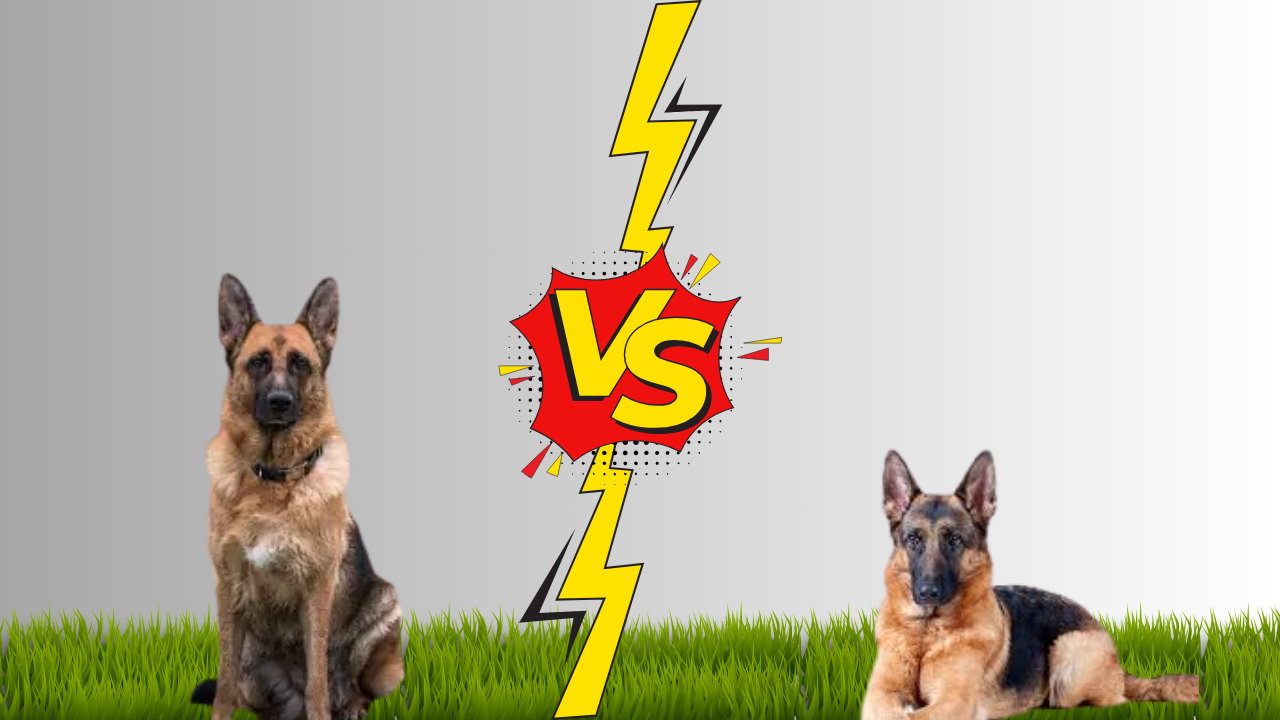When I first heard about the “Alsatian dog vs German Shepherd,” I wondered what set them apart. Interestingly, they’re actually the same breed, but “Alsatian” was used in the UK during the World Wars. The German Shepherd, also referred to as the Alsatian dog, was officially recognised in Germany in 1899 and has become globally loved. Learn about the differences between the Anatolian Shepherd vs Kangal Dog to choose the right breed for you. In this article, we will explore the key differences of the Alsatian dog vs German Shepherd.
The German Shepherd, or Alsatian, typically stands 22 to 26 inches tall and weighs between 50 to 90 pounds. Their strong build and striking appearance make them ideal for police and military roles. They’re often used in search-and-rescue operations due to their intelligence and keen senses.
Quick Navigation
Quick Look
The Alsatian dog vs German Shepherd debate refers to the same breed, with “Alsatian” used in the UK historically to avoid German associations. Both names refer to the same intelligent, loyal dog known for its versatility. The breed’s official name today is German Shepherd in most countries.
Understanding the Alsatian dog vs German Shepherd is essential for dog lovers and potential owners. Both names represent a breed known for its loyalty and intelligence.
Are Alsatians and German Shepherds the same breed in different countries?
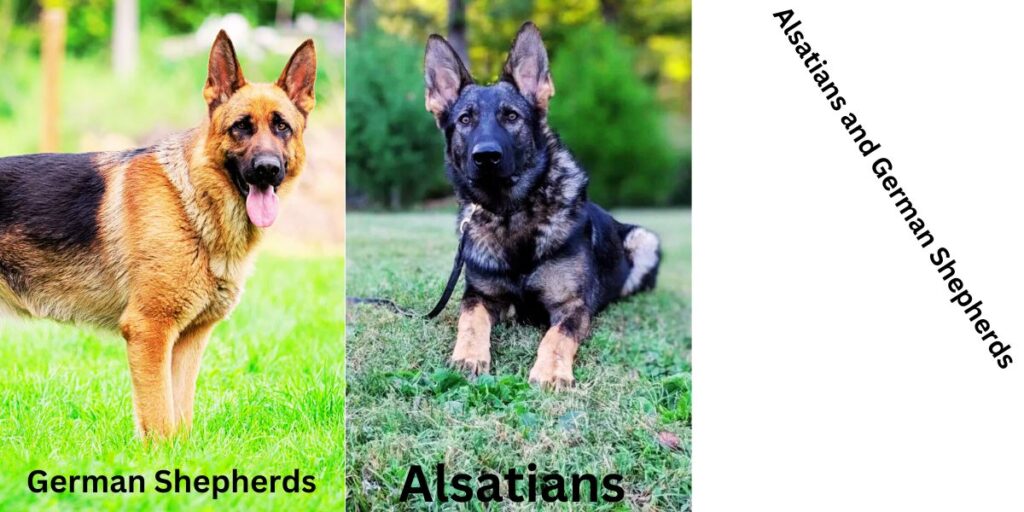
Yes, Alsatian Dog vs German Shepherd refers to the same breed. The term “Alsatian” was mainly used in the UK and other countries after World War I to avoid the German association due to anti-German sentiment at the time.
So when you think about Alsatian dog vs German Shepherd, know that the choice is more about the name than the breed itself.
However, the breed’s origin is German, and in most parts of the world, including the US, it is known as the German Shepherd. Despite the different names, there are no physical or behavioural differences between Alsatians and German Shepherds; they are essentially the same breed, just called different names based on historical circumstances.
When researching the Alsatian dog vs German Shepherd, make sure to look into their history as well.
More importantly, the Alsatian dog vs German Shepherd topic highlights their shared characteristics.
Comparison Table
The ongoing debate of Alsatian dog vs German Shepherd continues to intrigue dog enthusiasts around the world.
In exploring the Alsatian dog vs German Shepherd, you’ll find that both names evoke strong sentiments in dog lovers.
This discussion on the Alsatian dog vs the German Shepherd emphasises the breed’s importance in various roles.
Alsatian Dog vs German Shepherd
Historical Background: The Roots of the German Shepherd and Alsatian
Let’s dive into the history of the German Shepherd, which also goes by the name Alsatian in some parts of the world. This name change was particularly noticeable in the UK. The breed was first developed in Germany in 1899, and its origins were rooted in the need for a versatile working dog.
The Adoption of the Name “Alsatian”

The term “Alsatian” was adopted in the UK during and after World War I. This was a time when anti-German sentiment ran high, and the name “German Shepherd” was seen as too controversial. For about 50 years, the breed was widely known as the Alsatian in the UK, before the original “German Shepherd” name was restored in the 1970s. Understanding how often you should brush or comb your German Shepherd’s fur is key to their grooming routine. For tips on how frequently to maintain their coat, check out our detailed guide on Brushing and combing frequency for German Shepherds.
Restoration of the Name “German Shepherd”
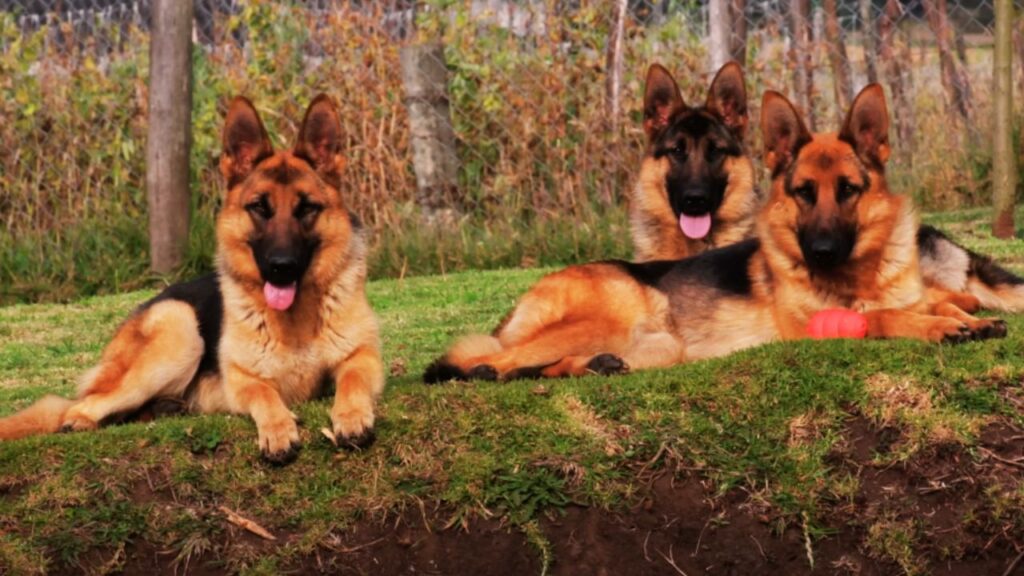
Today, both names refer to the same breed, but it’s important to note that in some countries, like the UK, “Alsatian” remains a popular term. The dog’s history as a herding dog from Germany and its role as a police and military dog only adds to its legacy. This breed has been around for over 100 years and continues to thrive in various roles worldwide.
Physical Characteristics: Size, Coat, and Distinct Features
When it comes to physical traits, both the Alsatian and German Shepherd share similar features. They are medium to large-sized dogs, with males typically weighing between 65 to 90 pounds and females ranging from 50 to 70 pounds. These dogs have a strong, muscular build, making them excellent working companions.
Coat Types and Colors
In terms of temperament, the Alsatian dog vs German Shepherd debate often leads to similar conclusions.

The discussion surrounding Alsatian dog vs German Shepherd is vital for potential dog owners.
One of the standout features of these dogs is their double coat. The outer coat is dense and waterproof, while the undercoat is softer. Colors can vary from sable to black and tan, with sable being one of the most common color patterns.
Distinctive Features
Both the Alsatian and German Shepherd have upright, pointed ears and a bushy tail that curves slightly upwards. Their eyes are usually dark, giving them an alert and intelligent expression. The breed’s physical appearance is well-suited to their working roles, contributing to their versatility.
Temperament and Behavior
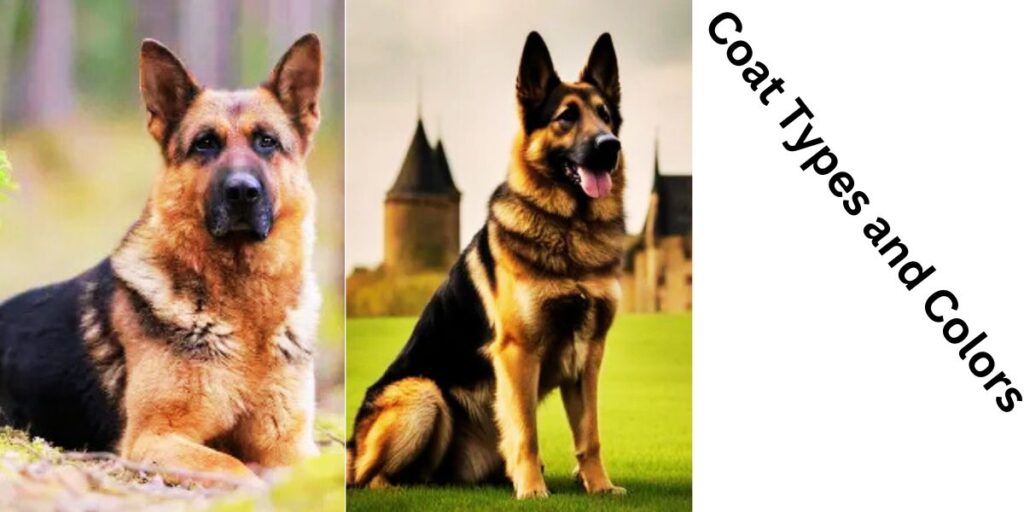
As we delve deeper into Alsatian dog vs German Shepherd, their shared traits become more evident.
When it comes to temperament and behavior, the Alsatian/German Shepherd is known for its intelligence and loyalty. I’ve found that these dogs are incredibly trainable, making them ideal for families and working roles. They are often ranked among the smartest dog breeds, with intelligence comparable to that of Border Collies.
Social Behavior and Interaction
German Shepherds are known for their loyalty, often forming close bonds with their owners. They typically weigh between 50 to 90 pounds, and their protective instincts make them great watchdogs. However, they tend to be reserved around strangers and need early socialization to avoid becoming overly protective.
Trainability and Intelligence
What makes these dogs stand out is their high level of trainability. German Shepherds excel in obedience training, which is why they’re often used in police, military, and service dog roles. With proper training, they can learn complex commands, making them both fun and challenging to train.
Ultimately, the Alsatian dog vs German Shepherd conversation enriches our understanding of this beloved breed.
Behavioral Traits to Be Aware Of
As you ponder the Alsatian dog vs German Shepherd, consider their roles in various settings.
One thing to remember about German Shepherds is their need for mental stimulation. If not given enough tasks to do, they may develop destructive behaviors. On average, they need at least an hour of exercise each day to stay healthy and well-behaved.
Health and Lifespan of German Shepherds
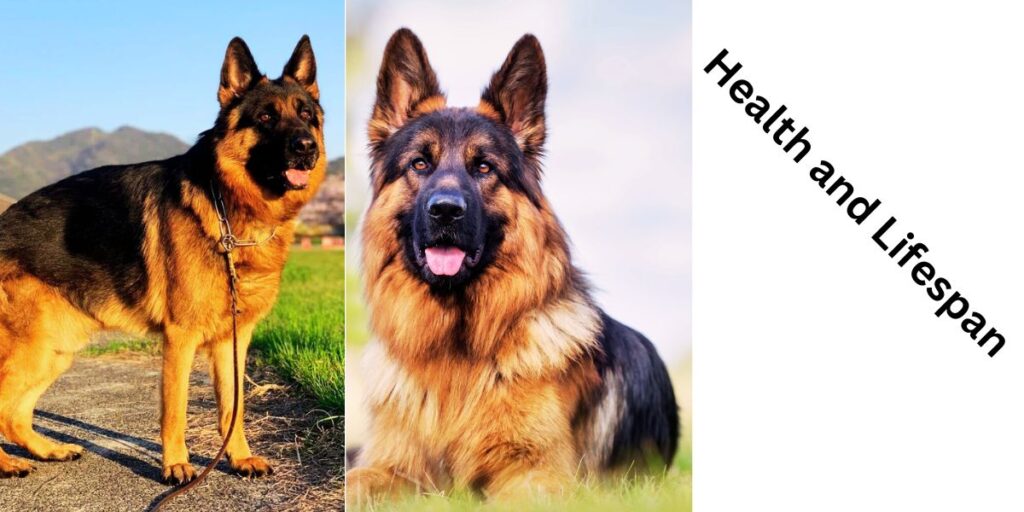
When considering a breed like the German Shepherd (or Alsatian), it’s important to understand the health concerns and average lifespan. German Shepherds typically live between 9 and 13 years, with some reaching up to 15 years with proper care. Knowing these details can help potential owners prepare for a long, healthy companionship.
German Shepherds are known to suffer from a few common health issues, especially as they age. Hip dysplasia is a frequent concern, affecting about 20% of the breed. Another common issue is degenerative myelopathy, a progressive disease that affects their spinal cord.
This popular discussion of Alsatian dog vs German Shepherd continues to influence dog ownership choices.
Moreover, the Alsatian dog vs German Shepherd debate showcases the importance of responsible ownership.
Regular vet visits and good overall care can help extend their lifespan. Ensuring a balanced diet and maintaining a healthy weight can significantly lower the risk of these conditions. Staying active and engaging in regular exercise is key to keeping your German Shepherd fit and happy for many years.
Understanding the Alsatian dog vs German Shepherd issue is crucial for fostering positive relationships with dogs.
Training and Exercise Needs
The lasting impact of the Alsatian dog vs German Shepherd debate can be seen in many families across the globe.

When it comes to training, both Alsatians and German Shepherds are highly intelligent, making them easy to train. They often excel in obedience and can learn commands quickly. In fact, they’re known for being among the most trainable dog breeds, often ranking 3rd in intelligence!
Exercise Requirements
All in all, the Alsatian dog vs German Shepherd conversation is significant for dog lovers everywhere.
The ongoing interest in the Alsatian dog vs German Shepherd highlights the breed’s unique qualities.
These dogs thrive on regular physical exercise. Whether it’s running, hiking, or playing fetch, they need around 1.5 to 2 hours of activity daily to stay happy and healthy. Without enough exercise, they can become bored and potentially destructive.
Reflecting on the Alsatian dog vs German Shepherd helps new owners understand their responsibilities.
In summary, the Alsatian dog vs German Shepherd discourse is essential for aspiring dog owners.
Training Methods
Ultimately, the Alsatian dog vs German Shepherd debate underscores the need for informed decision-making.
Training methods should be firm but kind. Both breeds respond well to positive reinforcement, including treats and praise. It’s important to start training early, ideally when they’re puppies, as they’re most receptive during their first year of life.
Popularity and Recognition
When it comes to the popularity of Alsatian dogs and German Shepherds, there’s no doubt that both are beloved worldwide. The German Shepherd is one of the most popular dog breeds in the United States, consistently ranking in the top 2 to 3 positions for many years. This breed’s intelligence and versatility have made it a top choice for working roles, from police dogs to search and rescue operations.
Recognition in the UK and US
While the term “Alsatian” was once widely used in the UK, the breed has enjoyed the same level of affection and recognition. In fact, despite the historical name change, both terms are recognized by major kennel clubs, including the UK Kennel Club and the American Kennel Club (AKC). The German Shepherd is ranked the 2nd most popular breed in the US according to the AKC’s 2023 report, reflecting its global fame and admiration.
The German Shepherd’s Enduring Appeal
In various countries, the recognition of this breed has shaped its place in both families and professional settings. The breed is recognized for its loyalty, trainability, and protective nature. It’s easy to see why the German Shepherd remains one of the most loved dog breeds worldwide, whether it’s referred to as the Alsatian in the UK or simply the German Shepherd elsewhere.
Final Words
In my experience, the Alsatian dog vs German shepherd debate boils down to the same wonderful breed with different names. These dogs are highly intelligent, loyal, and versatile. German Shepherds have been known to live 9 to 13 years, with proper care.
Whether you call them Alsatians or German Shepherds, they offer incredible companionship and excel in various roles, from family pets to working dogs. Choosing between them isn’t necessary both are excellent dogs!
FAQs
Are Alsatians and German Shepherds the same breed?
Yes, Alsatians and German Shepherds are the same breed. The name “Alsatian” was used in the UK to avoid German associations during and after World War I. The breed’s official name is German Shepherd in most countries, and there are no physical or behavioural differences between the two.
Why are they called Alsatians in some countries?
The term “Alsatian” was adopted in the UK during World War I to distance the breed from its German origins due to anti-German sentiment. The name refers to the Alsace region, which has historical ties to both France and Germany. After the war, the name “German Shepherd” was reinstated in most parts of the world.
Do Alsatians and German Shepherds have different temperaments?
No, Alsatians and German Shepherds share the same temperament. Both are known for their intelligence, loyalty, and versatility. They are highly trainable, making them ideal for police, military, and service dog roles. They are also great family pets, offering protection and companionship. The difference is purely in naming, not behaviour.

